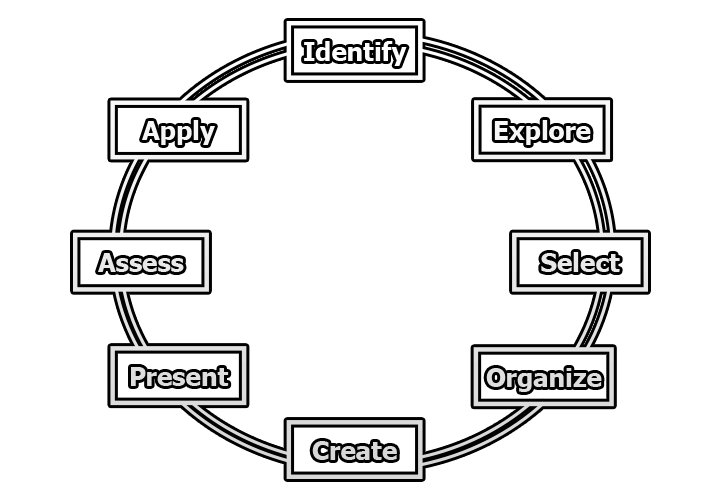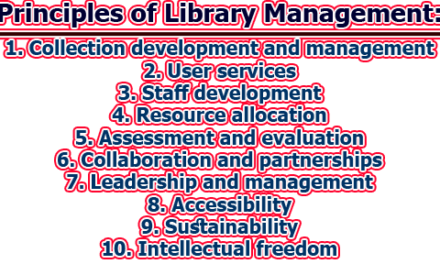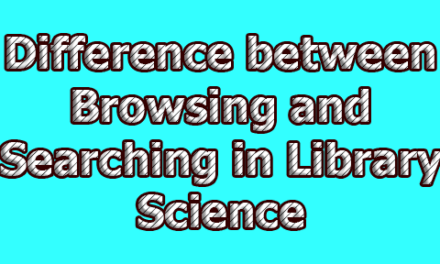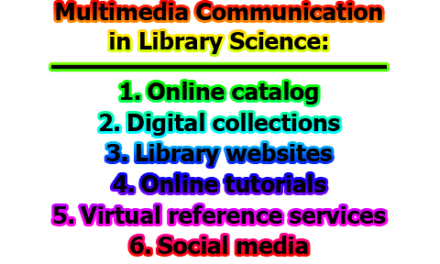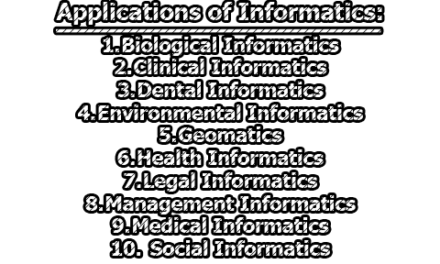The IFLA’s Empowering 8 Model of Information Literacy:
In today’s digital age, where information flows abundantly and access to it is easier than ever before, the ability to navigate, evaluate, and utilize information effectively has become increasingly crucial. Information literacy, therefore, stands as a cornerstone skill for individuals to thrive in both academic and professional spheres. Recognizing the significance of this skill set, the International Federation of Library Associations and Institutions (IFLA) developed the ‘Empowering 8’ model of information literacy. This model, born out of collaborative workshops held in Colombo, Sri Lanka, and Patiala, India, aims to equip individuals with the necessary competencies to tackle the complexities of information in the 21st century. In the rest of this article, we will explore the IFLA’s Empowering 8 Model of Information Literacy.
Understanding the Empowering 8 Model:
The Empowering 8 model is grounded in a problem-solving approach to resource-based learning. It provides a structured framework comprising eight key empowerments, each delineating specific skills necessary for proficient information literacy:
1. Identify: The first stage of the Empowering 8 model focuses on laying the groundwork for effective information retrieval. This involves:
- Determine the Topic or Subject: Before embarking on any research endeavor, it is essential to clearly define the topic or subject of interest. This involves identifying the specific area or theme that will be the focus of the research. For example, if the goal is to explore renewable energy sources, the topic could be narrowed down to “The Impact of Solar Energy Adoption in Urban Areas.” By precisely defining the topic, researchers can avoid ambiguity and ensure that their efforts remain focused and targeted.
- Determine and Understand the Audience: Understanding the characteristics, needs, and preferences of the target audience is paramount for effective communication and information dissemination. Whether the audience comprises peers, academics, professionals, or the general public, researchers must tailor their approach to suit their audience’s level of expertise, interests, and expectations. For instance, presenting complex scientific findings to a lay audience may require simplifying technical jargon and using visual aids to enhance comprehension.
- Choose the Relevant Format for the Finished Product: Once the topic and audience have been identified, researchers must decide on the most suitable format for presenting their findings. This could range from academic papers and reports to presentations, infographics, or multimedia content. The chosen format should align with the audience’s preferences and the nature of the research. For example, a research paper may be appropriate for scholarly audiences, while a visually engaging infographic may be more effective for a general audience.
- Identify Key Words: Keywords play a vital role in guiding the search process and retrieving relevant information from databases, libraries, and online resources. Researchers must identify key words and phrases that accurately represent the core concepts and themes of their research topic. These keywords can then be used to construct search queries and refine information retrieval strategies. For instance, for a research topic on climate change, key words could include “global warming,” “carbon emissions,” and “climate mitigation strategies.”
- Plan a Search Strategy: Effective information retrieval requires a well-defined search strategy that encompasses where and how to search for information. Researchers must consider the most appropriate sources, such as academic journals, books, databases, or websites, based on the nature of their research topic. Additionally, they should devise search techniques, such as Boolean operators, truncation, and proximity searching, to optimize search results and minimize irrelevant information. A systematic approach to planning the search strategy increases the likelihood of uncovering relevant and reliable sources.
- Identify Different Types of Resources in Which Information May Be Found: Information exists in various formats and sources, ranging from traditional print materials to digital resources and multimedia content. Researchers must familiarize themselves with the different types of resources available and understand their strengths, limitations, and relevance to their research topic. This may include academic journals, books, government publications, online databases, reputable websites, and audiovisual materials. By identifying diverse information sources, researchers can access a broader range of perspectives and insights on their chosen topic.
2. Investigate/Explore: The second stage involves delving deeper into the chosen topic by:
- Find Resources That Match the Selected Topic: With the research topic identified, the next step is to actively seek out resources that align with the chosen subject matter. This involves conducting systematic searches across various information sources, including libraries, databases, online repositories, and archives. Researchers must employ effective search strategies using the identified keywords to locate pertinent resources. For instance, utilizing advanced search filters and database features can help refine search results and uncover valuable scholarly articles, books, and other relevant materials.
- Find the Right Information Pertinent to the Selected Topic: In addition to locating resources, it is crucial to discern the right information that is pertinent to the selected topic. This entails critically evaluating the relevance, reliability, and credibility of the identified resources. Researchers must assess the authority of the authors, the accuracy of the information presented, and the currency of the sources. Peer-reviewed articles, scholarly publications, and reputable sources are prioritized to ensure the quality and validity of the information retrieved.
- Conduct Interviews, Field Trips, or Other Outside Researches: Beyond traditional sources, researchers may also engage in primary research methods such as interviews, field trips, or experiments to gather firsthand information and data. Conducting interviews with subject matter experts, stakeholders, or individuals with relevant experience can provide valuable insights and perspectives on the research topic. Likewise, field trips and site visits allow researchers to observe phenomena in real-world settings and collect empirical evidence to support their research findings. By integrating primary research methods, researchers enrich their exploration and deepen their understanding of the subject matter.
3. Choose/Select: In the third stage, individuals refine their information gathering process by:
- Select Relevant Information: At this stage, researchers must discern between relevant and irrelevant information to refine their focus and streamline their research efforts. This entails critically evaluating the content of identified resources and selecting those that directly contribute to addressing the research question or objectives. Researchers must consider factors such as alignment with the research topic, depth of coverage, and significance of the information in informing their analysis and conclusions. By selecting relevant information, researchers ensure the integrity and coherence of their research outcomes.
- Determine Which Sources Are Too Easy, Too Hard, or Average: In addition to relevance, researchers must assess the complexity and appropriateness of the selected sources in relation to their target audience and research objectives. Some sources may be too simplistic or introductory for the intended audience, while others may be overly technical or specialized. Researchers must strike a balance by selecting sources that align with the audience’s level of expertise and the depth of analysis required for the research. This involves considering factors such as readability, comprehensiveness, and accessibility of the selected sources.
- Record Relevant Information Through Notes or Create Visual Organizers: To effectively manage and organize the selected information, researchers must record key findings, insights, and citations through note-taking or visual organizers. This may involve summarizing key points, highlighting important quotes or data, and categorizing information based on themes or subtopics. Visual organizers such as concept maps, mind maps, or charts can help researchers visualize the relationships between different pieces of information and identify patterns or trends. By documenting relevant information systematically, researchers facilitate the synthesis and integration of diverse sources in their analysis.
- Identify the Stages in the Process: Recognizing the sequential stages involved in the research process is essential for maintaining clarity and focus throughout the selection phase. Researchers must identify key milestones or checkpoints in the research journey, such as literature review, data collection, analysis, and synthesis. By breaking down the research process into manageable stages, researchers can monitor progress, track changes, and adjust their approach as needed. This iterative process ensures that the selection of information remains aligned with the overarching research objectives and timeline.
- Gather the Appropriate Citation: As researchers compile and integrate selected information into their work, it is imperative to gather appropriate citations to acknowledge the sources and provide proper attribution. This involves accurately documenting the bibliographic details of each selected source, including author(s), title, publication date, publisher, and page numbers. Researchers must adhere to citation conventions and formatting styles specified by their discipline or academic institution, such as APA, MLA, or Chicago style. Proper citation not only gives credit to the original authors but also enhances the credibility and integrity of the research by enabling readers to verify and trace the sources referenced.
4. Set/Organize: The fourth stage focuses on organizing and structuring the gathered information by:
- Sort the Information: The first step in organizing information is to categorize and sort it based on themes, topics, or relevance to the research question. Researchers may create an outline or hierarchy to group related information and identify common patterns or trends. This process helps researchers gain a comprehensive overview of the content and identify gaps or overlaps in the information collected. By sorting information systematically, researchers lay the groundwork for coherent analysis and synthesis.
- Distinguish Between Facts, Fiction, and Opinions: In addition to sorting information, researchers must critically evaluate the veracity and reliability of the content by distinguishing between facts, fiction, and opinions. This involves scrutinizing the evidence, sources, and arguments presented in each source to determine their credibility and validity. Researchers must prioritize factual information supported by empirical evidence or authoritative sources while being cautious of unsubstantiated claims or biased viewpoints. By discerning between different types of information, researchers ensure the accuracy and integrity of their analysis.
- Check for Bias in Sources: Bias can distort the interpretation and representation of information, leading to skewed perspectives or misleading conclusions. Researchers must critically evaluate the potential biases inherent in the selected sources, including author bias, publication bias, and ideological bias. This requires examining the author’s background, affiliations, and agenda, as well as assessing the objectivity and balance of the information presented. By identifying and mitigating bias, researchers maintain the integrity and objectivity of their research findings.
- Sequence Information in a Logical Order: Once information has been sorted and evaluated, researchers must sequence it in a logical and coherent order to enhance comprehension and readability. This involves structuring the information in a logical flow, such as chronological, thematic, or hierarchical order, to guide the reader through the research narrative. Researchers must consider the sequence of ideas, arguments, and evidence to ensure that the presentation is logical, coherent, and persuasive. By organizing information sequentially, researchers facilitate understanding and engagement with their work.
- Use Visual Organizers to Compare or Contrast Information: Visual organizers such as charts, graphs, diagrams, and tables can be powerful tools for presenting complex information and facilitating comparisons or contrasts between different sources. Researchers may use visual aids to illustrate trends, relationships, or patterns in the data, making it easier for readers to grasp key concepts and insights. Visual organizers enhance the clarity and impact of the presentation, enabling researchers to communicate their findings effectively. By incorporating visual elements, researchers cater to diverse learning styles and enhance the accessibility of their research.
5. Make/Create: In the fifth stage, individuals transform their gathered information into meaningful content by:
- Prepare Information in One’s Own Words in a Meaningful Way: One of the essential aspects of this stage is the ability to synthesize and rearticulate the gathered information in one’s own words. Researchers must distill complex ideas, concepts, and findings into clear and concise language that is accessible to the intended audience. This involves paraphrasing, summarizing, and synthesizing information while preserving its original meaning and integrity. By presenting information in their own words, researchers demonstrate their understanding and mastery of the subject matter, enhancing the credibility and authenticity of their work.
- Revise and Edit on One’s Own or with a Peer: After preparing the initial draft, researchers must engage in iterative revision and editing to refine the content and enhance its clarity, coherence, and readability. This may involve reviewing the content for grammatical errors, structural inconsistencies, and logical flaws, as well as refining the language and tone to ensure clarity and effectiveness. Researchers may seek feedback from peers, mentors, or collaborators to gain fresh perspectives and identify areas for improvement. By revising and editing rigorously, researchers elevate the quality and impact of their work.
- Finalize Format and Bibliographies: Once the content has been revised and polished, researchers must finalize the format and layout of the finished product. This involves formatting the text according to the chosen medium or platform, such as academic papers, reports, presentations, or multimedia presentations. Researchers must also ensure the accuracy and completeness of bibliographic references by verifying citations, formatting them according to the specified style guide, and cross-checking them against the original sources. By finalizing the format and bibliographies, researchers enhance the professionalism and credibility of their work.
6. Attend/Present: The sixth stage focuses on preparing for and delivering presentations by:
- Practice for Presentation Activity: Effective presentation requires thorough preparation and practice to ensure clarity, coherence, and confidence in delivery. Researchers must rehearse their presentations multiple times, paying attention to pacing, articulation, and body language. This may involve conducting mock presentations in front of peers, mentors, or video recording devices to identify areas for improvement and refine the delivery. By practicing rigorously, researchers build confidence and competence in presenting their research to the audience.
- Distribute Information to the Right Audience: Identifying and reaching the right audience is essential for ensuring the relevance and impact of the research presentation. Researchers must tailor their presentations to suit the interests, needs, and expectations of the target audience. This may involve conducting audience analysis to understand their demographics, preferences, and knowledge levels, as well as customizing the content and delivery approach accordingly. By distributing information to the right audience, researchers maximize engagement and receptiveness to their message.
- Display Information in the Appropriate Format to Suit the Audience: The format and style of presentation play a crucial role in capturing the audience’s attention and conveying the research message effectively. Researchers must select the appropriate presentation format, such as slides, posters, or multimedia presentations, based on the audience’s preferences and the nature of the research. Additionally, researchers must design visually appealing and engaging materials that complement the content and facilitate understanding. By displaying information in the appropriate format, researchers enhance the accessibility and impact of their presentations.
- Create and Use Equipment Properly: Utilizing presentation equipment effectively and responsibly is essential for delivering a seamless and professional presentation. Researchers must familiarize themselves with the technical specifications and functionalities of presentation tools, such as projectors, microphones, and audiovisual aids. Additionally, researchers should conduct equipment checks and rehearsals to ensure proper functionality and troubleshoot any potential issues beforehand. By creating and using equipment properly, researchers minimize disruptions and distractions during the presentation, allowing for a smooth and engaging delivery.
7. Assess: In the seventh stage, individuals evaluate their performance and reflect on their learning by:
- Receive Feedback from Other Students: Seeking feedback from peers and colleagues is invaluable for gaining insights and perspectives on one’s research process and outcomes. Researchers can share their work with fellow students, research groups, or online communities and solicit constructive feedback on their methods, findings, and presentation. Peer feedback provides an external perspective and identifies blind spots or areas for improvement that may not be apparent to the researcher. By receiving feedback from other students, researchers enrich their understanding and refine their research practices.
- Self-Assess an Individual’s Performance: Self-assessment involves critically reflecting on one’s own performance and identifying strengths, weaknesses, and areas for growth. Researchers can evaluate their research process, outcomes, and presentation against predefined criteria or learning objectives. This may include assessing the effectiveness of research strategies, the quality of information gathered, the clarity of communication, and the attainment of learning goals. Self-assessment fosters self-awareness and accountability, enabling researchers to take ownership of their learning and development.
- Reflect on How Well They Have Done: Reflection is a critical aspect of the assessment process, allowing researchers to introspect on their experiences, insights, and lessons learned throughout the research journey. Researchers can engage in structured reflection exercises, such as journaling, debriefing sessions, or reflective essays, to document their thoughts and experiences. This process encourages deep learning and facilitates personal growth by identifying successes, challenges, and areas for further exploration. By reflecting on how well they have done, researchers gain valuable insights into their research process and outcomes.
- Determine Whether New Skills Are Learned: Assessing skill acquisition is essential for evaluating the effectiveness of the research process and identifying areas for skill development. Researchers can reflect on the acquisition of new research skills, techniques, and competencies acquired during the research project. This may include information literacy skills, critical thinking skills, data analysis skills, or presentation skills. By assessing skill acquisition, researchers gauge their progress and readiness to tackle future research challenges.
- Consider What Can Be Done Better Next Time: The ultimate goal of assessment is to inform continuous improvement and refinement of research practices. Researchers should use feedback, self-assessment, and reflection to identify specific areas for improvement and develop actionable strategies for future research endeavors. This may involve setting goals, seeking additional training or resources, or refining research methodologies based on lessons learned. By considering what can be done better next time, researchers demonstrate a commitment to excellence and ongoing professional growth.
8. Apply: In the final stage, individuals apply their newly acquired knowledge and skills in real-world contexts by:
- Review the Feedback and Assessment Provided: Researchers begin by reviewing the feedback and assessment received during the previous stages of the research process. This includes feedback from peers, mentors, instructors, and self-assessment reflections. By reviewing feedback and assessment, researchers gain insights into areas of strength and weakness in their research practice and outcomes.
- Use the Feedback and Assessment for Subsequent Learning Activities/Tasks: Researchers then apply the feedback and assessment received to inform subsequent learning activities or research tasks. This may involve integrating constructive feedback into future research projects, setting goals for skill development, or seeking additional training or resources to address identified areas for improvement. By using feedback and assessment for subsequent learning activities, researchers demonstrate a commitment to continuous improvement and professional growth.
- Try to Use the Acquired Knowledge in New Situations: Researchers actively seek opportunities to apply the knowledge and skills acquired during the research process to new situations and contexts. This may involve undertaking new research projects, participating in interdisciplinary collaborations, or engaging in experiential learning opportunities. By applying acquired knowledge in new situations, researchers broaden their expertise, adaptability, and problem-solving abilities.
- Decide What Is in Other Subjects of These Skills That Can Be Used: Researchers recognize the cross-disciplinary applications of information literacy skills and seek to leverage them in other subjects or domains. This may involve identifying connections between research findings and related fields of study, exploring interdisciplinary research opportunities, or applying information literacy skills in professional contexts outside academia. By identifying opportunities for skill transfer across disciplines, researchers enhance the relevance and impact of their work.
- Add Products to Its Portfolio of Production: Finally, researchers document and showcase their research products and outcomes as evidence of their knowledge, skills, and achievements. This may include compiling research papers, presentations, posters, or multimedia projects into a portfolio of production. By curating a portfolio of their work, researchers create a tangible record of their accomplishments and contributions to knowledge advancement in their field of inquiry.
Empowerments in Action:
To illustrate the practical application of the Empowering 8 model, consider a scenario where a student is tasked with researching the impact of climate change on marine ecosystems:
1. Identify: The student defines the research topic, identifies the target audience (perhaps peers or scientists), selects the appropriate format (academic paper), and formulates a search strategy focusing on keywords like “climate change,” “marine biodiversity,” and “ecosystem degradation.”
2. Investigate/Explore: Utilizing online databases, academic journals, and relevant websites, the student gathers information on climate change’s effects on marine life. They might also conduct interviews with marine biologists or visit local marine research centers.
3. Choose/Select: The student evaluates gathered information for relevance and reliability, takes notes, and properly records citations.
4. Set/Organize: Sorting through collected data, distinguishing between empirical evidence and conjecture, and organizing findings into coherent sections are essential at this stage.
5. Make/Create: Synthesizing gathered information, the student drafts an academic paper, revises it for clarity and coherence, and includes a comprehensive bibliography.
6. Attend/Present: The student rehearses their presentation, tailors content to the audience’s level of understanding, prepares visual aids, and delivers the presentation using appropriate technology.
7. Assess: Feedback from peers and self-reflection help the student assess the quality of their work, identify areas for improvement, and acknowledge their progress.
8. Apply: The student incorporates feedback into future projects, applies knowledge gained from this research in related fields, and adds the completed project to their academic portfolio.
In conclusion, the IFLA’s Empowering 8 model of information literacy provides a structured and comprehensive framework for individuals to develop essential skills for navigating the information landscape effectively. By guiding learners through a systematic process of identifying, investigating, choosing, setting, making, attending, assessing, and applying information, this model empowers them to become discerning consumers and producers of knowledge. As information continues to evolve and proliferate, cultivating information literacy skills becomes increasingly imperative, and the Empowering 8 model stands as a beacon guiding learners towards success in the digital age.

Assistant Teacher at Zinzira Pir Mohammad Pilot School and College

